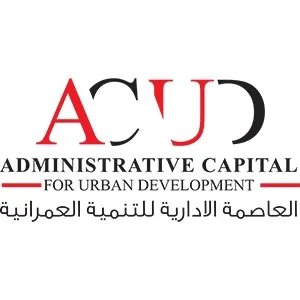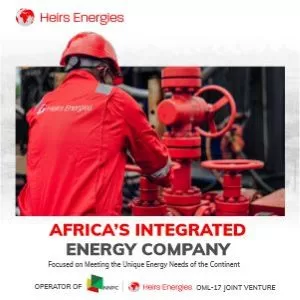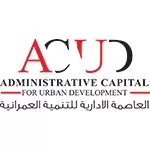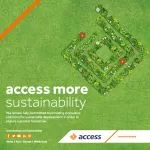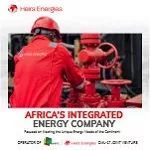Science & Environment
Google’s Fusion Power Deal: A Global Leap Toward Clean Energy

- The 200-MW Google fusion power deal with CFS, announced on June 30, 2025, is a step toward clean and reliable energy that can change the global energy markets if successful.
- Fusion power fosters sustainability by being a model of energy innovation worldwide.
Picture a world where cities from London to Shanghai run on the same energy that powers the stars. On June 30, 2025, Google entered the largest fusion power purchase agreement in history with Commonwealth Fusion Systems (CFS) to acquire 200 megawatts (MW) from the ARC power plant located in Chesterfield County, Virginia. This indeed was a global milestone, with the plant scheduled to supply clean energy by the early 2030s.
The fusion deal between CFS and Google, announced on June 30, 2025, is a landmark occasion that might influence global energy markets, should fusion prove commercially viable. Fusion power is destined to be a genuine solution for clean, reliable energy, but it is still faced with significant scientific challenges. That might aid the world, so what are its implications for the energy landscape?
Why Fusion Power Is a Global Game-Changer
Fusion power fuses hydrogen atoms, mimicking the sun’s energy production. It emits no greenhouse gases, unlike fossil fuels. It runs 24/7, unlike solar or wind. It’s safe, producing no long-lived radioactive waste, unlike nuclear fission.
Powered with 400 MW of plant capacity, CFS’s ARC plant would be able to provide power for 150,000 homes or large industrial facilities. The 200 MW agreement by Google is the biggest of its kind and adds to the 50 MW agreement made in 2023 between Helion and Microsoft, thus reinforcing the growing commitment to fusion power.
Key global benefits:
- From London to Lagos, fusion plants can run anywhere.
- Fusion backs worldwide climate objectives such as the Paris Agreement.
- Fusion projects provide investments and jobs all over the globe.
What can fusion power do for energy stability in your region?
Google’s Role in Fusion Power
Google has led clean energy since 2010, procuring over 22 gigawatts of renewables globally, cutting data centre emissions by 12%. Their $1.8 billion investment in CFS in 2021, followed by another undisclosed sum in 2025, shows their commitment to fusion.
The global rise of AI and cloud computing drives unprecedented energy demand. Data centre power needs are projected to grow significantly by 2030, driven by AI and cloud computing, with cities like Tokyo and Frankfurt facing increased demand. Fusion offers a stable, clean solution to power Google’s global operations.
Data centres in cities like London face challenges with grid reliability due to rising energy demands from AI and cloud computing. Fusion’s consistent output could address such concerns worldwide.
Google is securing fusion power for their global data centres while accelerating the technology’s development. How might this shift influence energy markets in your region?
Commonwealth Fusion Systems: Pioneering a Global Model
CFS, spun out of MIT in 2018, is developing SPARC, a demonstration tokamak in Massachusetts, aiming for net energy gain (Q>1) by 2027. ARC, the commercial version, will scale this to 400 MW in Virginia. Its high-temperature superconducting (HTS) magnets make fusion compact and cost-effective.
This technology has global potential. The Virginia ARC plant demonstrates how fusion can integrate into existing energy infrastructure, offering a model for coal-dependent regions like India, China, or Australia.
CFS’s strengths:
- SPARC’s design is backed by peer-reviewed research.
- ARC’s compact size suits urban and rural sites worldwide.
- The Virginia plant will generate billions in investment and hundreds of jobs.
This blueprint could inspire fusion plants globally. How might fusion transform energy infrastructure in your country?
Fusion Power and Global Sustainability
The world is committed to net-zero emissions by 2050, with regions like the EU, UK, and China setting bold targets. Fusion power aligns perfectly, offering clean, reliable energy without the limitations of renewables or the risks of fission.
Fusion doesn’t rely on weather or vast land, making it ideal for urban hubs like London, Mumbai, or São Paulo. It produces minimal waste, ensuring safety for densely populated areas.
Cities like Singapore face challenges with renewable energy reliability due to their dependence on consistent power for urban infrastructure. Fusion could provide a steady power source, supporting urban sustainability goals globally.
What role could fusion play in meeting your region’s climate commitments?
The Global Economic Impact of Fusion
Fusion power could reshape economies. The ARC plant’s construction in Virginia will create hundreds of jobs and billions in investment. Scaled globally, fusion could revitalise regions from the UK to South Africa.
Global electricity demand is projected to rise significantly by 2050, driven by AI, electric vehicles, and industrial growth, according to industry analyses. Fusion can meet this demand without carbon emissions, stabilising energy costs worldwide.
Google’s deal includes options to purchase power from future ARC plants globally, signalling fusion’s scalability. Picture fusion plants powering cities across Europe, Asia, or Africa.
Fusion power has the potential to reduce reliance on volatile fossil fuel markets, stabilising energy supplies globally. This could stabilise economies globally.
What economic benefits could fusion bring to your region?
Challenges and Opportunities for Fusion
Fusion faces hurdles. Achieving net energy gain is complex. Building reliable plants is costly. CFS’s CEO, Bob Mumgaard, describes ARC’s early years as a “learning phase” for reliability.
The opportunities are vast:
- Fusion offers predictable energy costs for global markets.
- It positions regions as leaders in clean energy.
- Fusion drives advancements in related technologies.
Google’s deal encourages investment in fusion worldwide. Projects like China’s EAST tokamak and Japan’s JT-60SA show global momentum.
What challenges must your region address to adopt fusion power?
Fusion’s Role in Global Data Centres
AI is transforming the world, but it demands massive energy. Data centres in London, Singapore, or New York face soaring power needs. Fusion’s constant output makes it ideal for these facilities.
Google’s deal targets its global data centres, which consume gigawatts annually. In 2024, global data centre demand grew 11%, with Asia-Pacific leading. Fusion could stabilise the power supply worldwide.
A Tokyo-based engineer I met last year described grid limitations hampering their AI operations. Fusion could deliver reliable power anywhere.
How could fusion support the energy needs of global data centres?
The UK and Global Fusion Leadership
The UK is a fusion pioneer, with the Joint European Torus (JET) in Oxfordshire leading research for decades. The UK’s STEP programme aims to deliver a fusion plant by the 2040s, positioning the UK as a hub for energy innovation.
Globally, others are advancing. Japan’s JT-60SA tokamak tests cutting-edge designs. China’s HL-3 reactor pushes fusion boundaries. CFS’s success could spark projects worldwide.
How can your region contribute to the global fusion race?
The Global Energy Future
Google’s fusion deal with CFS is a global milestone. It shows how fusion power can drive clean energy innovation, from London to Seoul. It offers a path to net-zero emissions, stable energy prices, and economic growth.
This deal is a call to action for regions and industries to invest in fusion’s future. From urban centres to industrial hubs, fusion could redefine energy access.

































